Link
In the heart of the Amazon, women travel by boat to the wild town of Iquitos before driving deep into the jungle.
Inside thatched huts, the symphony of frogs and insects builds to a crescendo and the jungle seems to come in through the netted walls, expanding like sacred geometry. By candlelight, shamans sing while pouring the ayahuasca, a foul-tasting brew that will provoke "la purga" — vomiting and diarrhoea.
Its effects — psychedelic visions — are claimed to be profoundly healing for some. But it carries risks, from psychosis to sexual assault. Several people have died through ayahuasca tourism, largely from other plant-based brews prepared by shamans.
But in an era where experiences and "bucket lists" are prioritised over savings and mortgages, psychedelic tours to the Amazon are sprouting like ferns in the jungle. In Peru, where taking ayahuasca is legal, there are up to 100 retreats in the Iquitos region alone
Women the new psychedelic explorers?
Ayahuasca is regarded by indigenous communities as a sacred feminine plant, so it's ironic that female exploration of the medicine tends to be framed as a wellness fad, as though serious self-discovery is only for men.
It's not helped by the fact that underground ceremonies have raged through yoga salons from Williamsburg to Topanga Canyon, while celebrity "aya seekers" include Chelsea Handler (who drinks the brew in her Netflix series Chelsea Does), Susan Sarandon, Tori Amos, Trudie Styler and Lindsay Lohan — who credits it with helping her cope with a miscarriage and "the wreckage" of her life.
Then there are the high-end retreats offering spas, laundry service and Wi-Fi, for about $5000 for 10 days, not including flights.
Writing in The New Yorker, Ariel Levy surmised: "If cocaine expressed and amplified the speedy, greedy ethos of the 1980s, ayahuasca reflects our present moment — what we might call the Age of Kale."
That description infuriates Zoe Helene, who runs the educational advocacy group Cosmic Sister. Formerly a performing artist, she grew up in New Zealand and now lives west of Boston, where her life's work is promoting "psychedelic feminism"— women's empowerment and healing through psychedelic plants.
"This is not tourism," she says emphatically. "You don't say, 'Hey, we'd like to buy tickets to that island with the monkeys and take selfies.'"
"It's also not a psychedelic festival where you dress in sexy costumes and dance until sunrise."
Cosmic Sister has developed three psychedelic feminism educational grants to support women in the field of psychedelics. The most recent, announced this July, is aimed at women tackling sexism, racism, wellness and sustainability through their psychedelic work. Then there's the Plant Spirit Grant, for women who want to participate in ceremonies with Shipibo shamans. Previous recipients include an academic, a social worker and a physician.
'Psychedelic feminism'
Jennifer Owens was 27 when she visited the village of Písac. The rope access technician from Wollongong has a history of depression and credits the ayahuasca with treating her panic attacks.
As it took effect, she believed herself to be communicating with the ayahuasca herself.
"She zoomed into my brain, showing me all the synapses and pathways lighting up. There was a pathway that needed redirection, and she dragged it to go in a different way. I asked her about the fate of this world and she took me out to space. She said, 'It's fine! I'll show you.' Time sped up and the world slowly decayed, and then was reborn bright and beautiful."
Meg Horan had turned 40 and finished up working for a record label in Australia. Before she started a new life in Iceland, she took a trip to the jungle.
"Other people there had very specific intentions. I just wanted to begin to be kinder to myself," she says.
She had long conversations with her critical voice; it was hard work and required maintenance out of the jungle, including meditation and mindfulness
"You can't just trip your balls off and expect everything to be better," she warns.
"It's a constant journey of self-improvement, not an instant cure-all."
The dark side of 'aya seeking'
Ayahuasca has also found itself in the news for all the wrong reasons. While pure DMT has very low toxicity, some of the other brews involved in similar ceremonies can be deadly for the inexperienced. In 2015, Canadian Jennifer Logan died from a pulmonary edema and Kiwi Matthew Dawson-Clarke had a heart attack after drinking a tobacco-based "purge" medicine believed to rid the body of toxins and anxiety.
"The danger is not knowing what the shaman's methods are," says Dr Bright. "They may add angel's trumpet plants or tobacco. They have been drinking these brews since childhood — we haven't."
Another risk is those with a family history of psychotic disorders may find drinking ayahuasca provokes an episode.
Then there are the reports of sexual assault. Taking a powerful psychedelic under the guidance of an unfamiliar man of influence is a risk for women.
"There are many recorded cases of shamans who intentionally seek out sexual relations with participants," anthropologist Daniela Peluso wrote in the book Ayahuasca Shamanism in the Amazon and Beyond.
"For these particular men, sex with participants is premeditated and part of a routine."
Lily Ross, a writer and educator in sexual violence resistance, spent nearly a month at a village in central Ecuador in 2012, where she was given brugmansia, which kept her in a fog of confusion. She says the shaman was persistent that their sexual bond was the will of god, and that he isolated and raped her repeatedly.
She says those working in the ayahuasca community must "out" abusers and put preventative measures in place.
Ayahuasca as therapy?
There have long been clinical trials exploring the use of psychedelics in therapeutic settings. If all approvals go to plan, MDMA will be used in PTSD treatment in the next few years, while US trials have tested LSD for anxiety. But trials using ayahuasca are harder to get off the ground.
"Ethics committees have an issue with administering plant-based medicines because it's much more quantifiable to say, 'This is 99.9 per cent human-grade LSD'," says Dr Stephen Bright, senior lecturer in addiction at Edith Cowan University and co-founder of Australia's Psychedelic Research in Science & Medicine (PRISM).
In 1995, a Brazilian religious society called Uniao do Vegetal, which uses ayahuasca for spiritual development, held an international conference to present their research. People who had regularly been drinking ayahuasca reported better psychological functioning and that the medicine had changed their lives, be they men who were engaging in domestic violence, or people who were alcohol-dependent.
'Spiritual tourism' white-washing the Amazon?
Traditional villages have often been battered by extractive industries. Could ayahuasca tourism be further obliterating indigenous culture?
Certainly, retreats bring money into impoverished communities, although to different degrees. Some are staffed almost exclusively by westerners. Others employ locals and establish permaculture projects with neighbouring villages.
Vidal Jaquehua, a Quechua native, told Vice that ayahuasca tourism is changing his home. As a result, his own tour company, Adios Adventure Travel, doesn't include ayahuasca retreats.
"We don't offer those trips because we respect our people, the costumes, traditions, and believe there are rituals that need to be understood and respected."
His philosophy is to "let the people practise it and don't make a business out of it."
Ms Helene believes it's possible to support cultural preservation through mutually respectful cultural exchange. "The conversation should be about defending the rights of indigenous people while supporting them to champion the environment they steward," she says.
Through Cosmic Sister she supports local women such as Kleylli Vargas Urquia, a Shipibo forestry student who received a grant; Estella Pangosa Sinacay, a shaman who runs the Aya Madre Healing Center; and local textile artists, whose work she promotes.
Ayahuasca on home turf
Perhaps drinking ayahuasca in Australia would carry fewer risks — and there are local plants with the same active ingredients. But DMT is a prohibited substance in Australia, so making a brew is drug manufacture and serving to others is supply.
Dr Bright believes the safest option would be for the Therapeutic Goods Administration to regulate ayahuasca, though those wheels are not in motion.
"Without any regulation you're playing Russian roulette," he says. "You're trusting word of mouth or what you've read on Reddit," he says.
The Department of Health said in a statement:
"Deaths have occurred when taking ayahuasca. Some deaths are attributable to erratic behaviour responding to hallucinations. People have also been robbed and sexually assaulted when incapacitated under the influence of ayahuasca. In addition, the interaction of MAOIs with other drugs may present significant drug-drug interactions."
Jenny Valentish is a freelance journalist and author of Woman of Substances: a journey into addiction and treatment.
0 notes
Link
Marine biologists working off Hawaii have confirmed the sighting of a hybrid of two dolphin species.
In August last year, a group of marine biologists was working off the island of Kauai when they spotted something a little odd.
"We came across a mixed group with two species: rough-toothed dolphins, and what appeared, at first, to be two melon-headed whales," said Robin Baird, a research biologist with the Cascadia Research Collective.
Melon-headed whales are generally found in very large groups of their own kind.
"Seeing just two individuals mixed in with the rough-toothed dolphins was a bit surprising," he said."Then, on closer observation, the field team noted one of the melon-headed whales had a very unusual head."
Melon-headed whales have a rounded head, and rough-toothed dolphins have a long, gently sloping rostrum, or "beak".But one of the two creatures had a head that was neither one nor the other."It had a gently sloping beak, but much shorter than a normal rough-toothed dolphin," Dr Baird explained
The team thought it could be a hybrid between the two species.A skin sample was collected and DNA testing, as a newly published paper outlines, confirmed their suspicions.The genetic test showed the hybrid had the mitochondrial haplotype of a melon-headed whale (actually a species of dolphin), which means the mother was a melon-headed whale, and the father was a rough-toothed dolphin.
The test also revealed the hybrid was male."It was the first time that a hybrid has been recorded between these two species" Dr Baird said."And hybrids in general in oceanic dolphins have only been confirmed genetically on a few prior occasions, it's quite unusual."
A number of species will hybridise in captivity, where mating opportunities are limited, but these two species are not usually held in captivity, said Dr Baird.He said it was a much more surprising occurrence in the wild.
'The term "wolphin" was first applied to the false killer whale and the bottlenose dolphin hybrid born in captivity in the 1980s.The mammal, named Kekaimalu, is still a major attraction at Hawaii's Sea Life Park.
Dr Baird said he thought using the term "wholphin" to describe the product of two dolphins just muddied the waters."It's a funny thing because back when many of these species were given common names, things like killer whales, pilot whales, melon-headed whales were all called whales," he said."But as the knowledge of their relationships with other species became clear, they are all actually oceanic dolphins, and they are all relatively closely related."So it's really that there's hybridisation between two different species of dolphins."And that in itself was "just as unique", he said, and its rarity should be appreciated.
0 notes
Photo
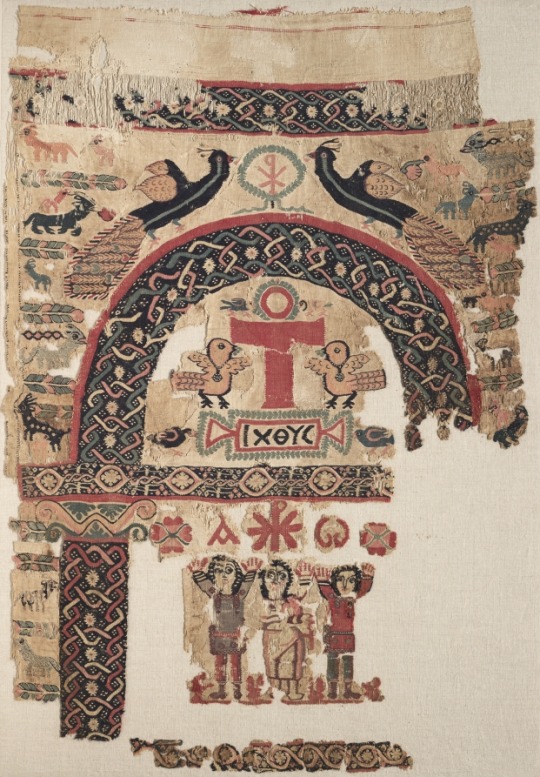
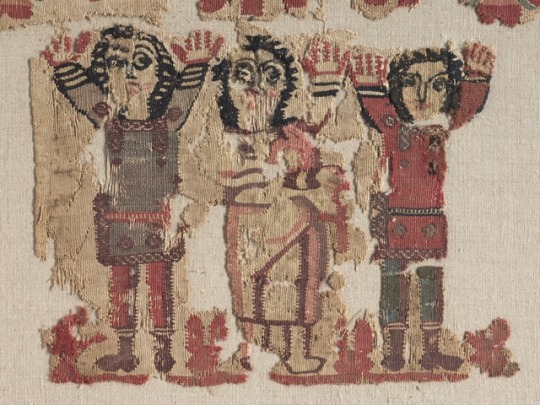

~ Hanging with Christian Images.
Place of origin: Egypt
Period: Byzantine period
Date: A.D. 6th century
Medium: Plain weave (tabby) with inwoven tapestry weave; dyed wool, undyed linen.
419 notes
·
View notes
Photo


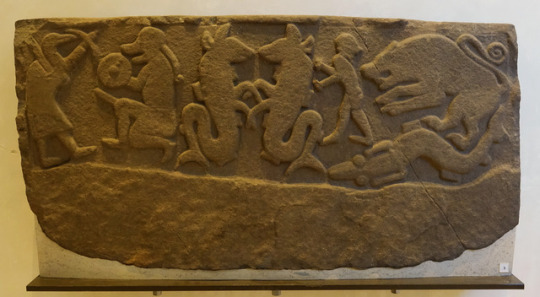
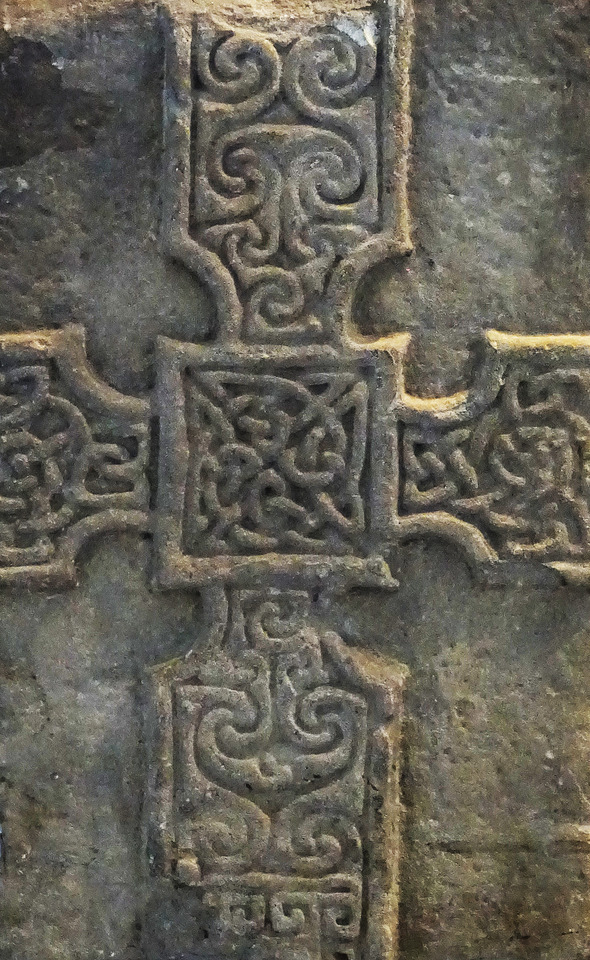

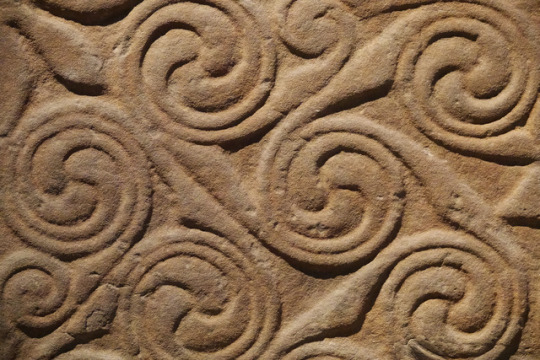
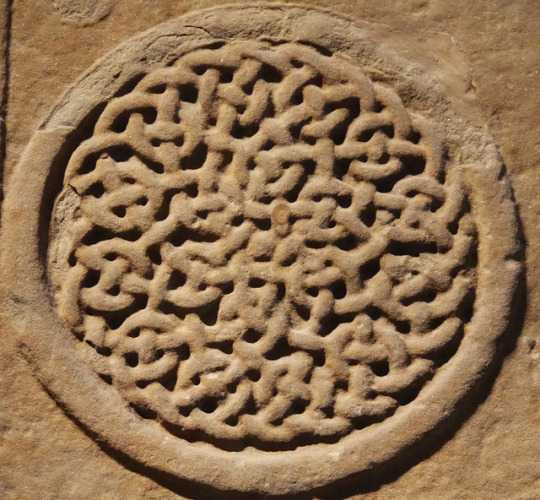
Pictish and Early Christian Carved Stone, The National Museum of Scotland, Edinbrugh, 11.11.17.
322 notes
·
View notes
Photo
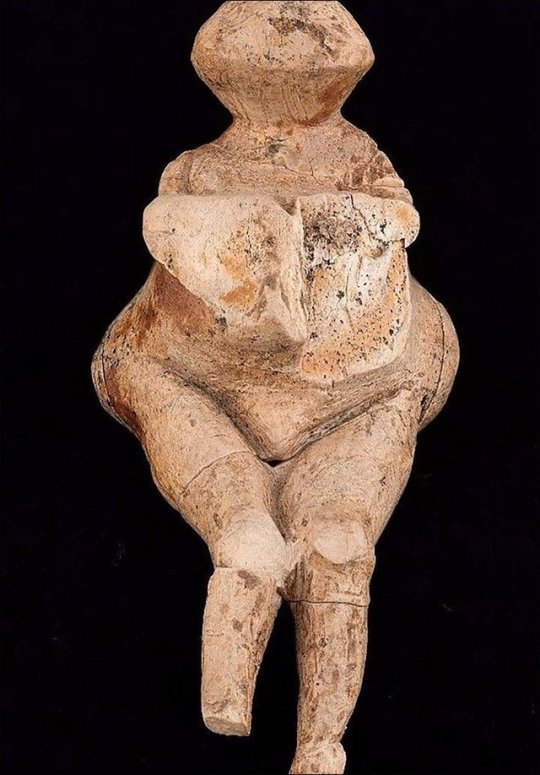
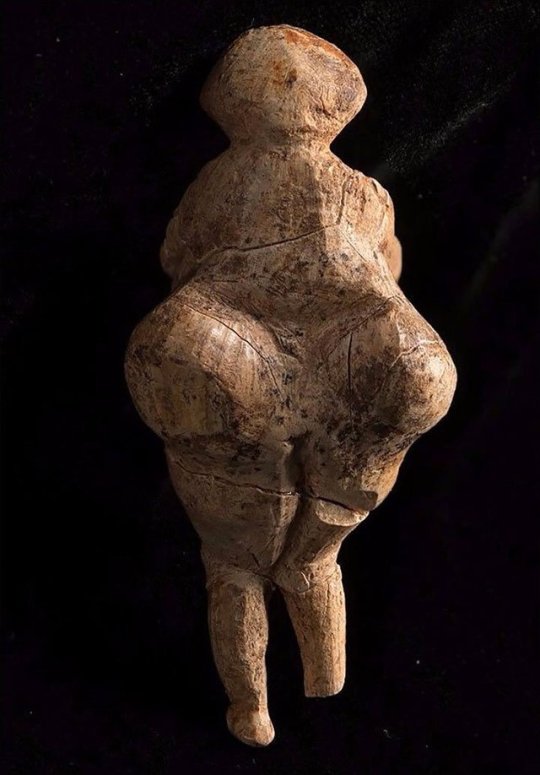
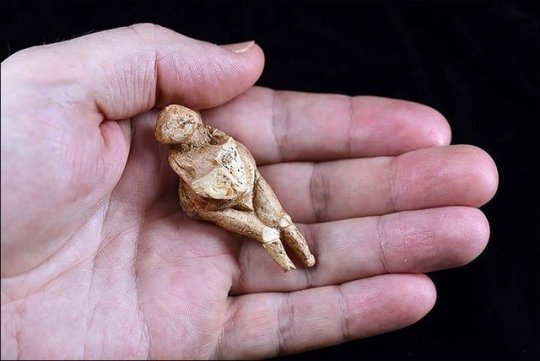
“Tiny 23,000-year-old mammoth ivory figurine discovered in the Bryansk region of Russia“
(Source: @Jamie_Woodward_ on Twitter)
236 notes
·
View notes
Photo
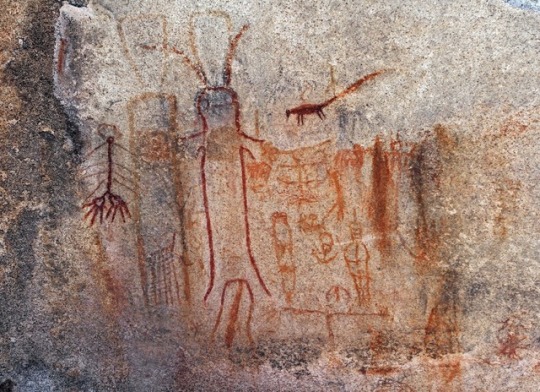
Rock Art Pictographs at Uluru (Ayers) Rock Site, Australia…
Uluru, or Ayers Rock, is a massive sandstone monolith in the heart of the Northern Territory’s arid “Red Centre”. The nearest large town is Alice Springs, 450km away. Uluru is sacred to indigenous Australians
116 notes
·
View notes
Photo
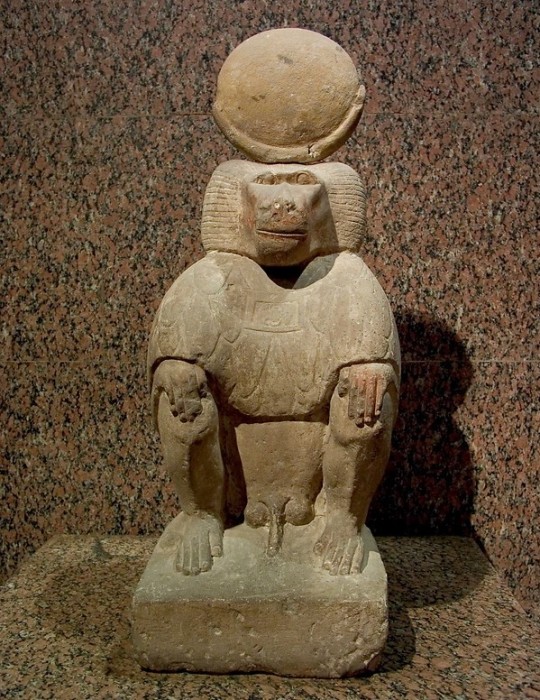
Statue of Thoth as a baboon, from Great Temple of Ramesses II at Abu Simbel. New Kingdom, 19th Dynasty, ca. 1279-1213 BC. Nubian Museum, Aswan.
654 notes
·
View notes
Photo
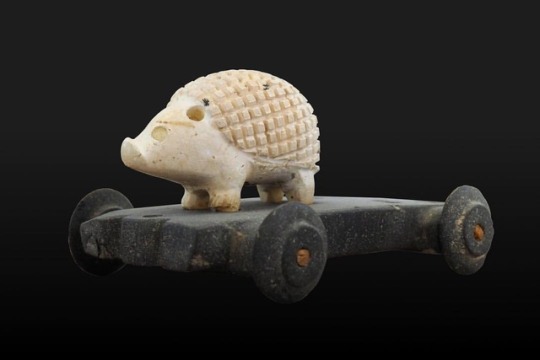
A wheeled asphalt and limestone hedgehog statuette, Iran (c. 1500 BCE) #iran #hedgehog #museum #history #artifacts #animal
4K notes
·
View notes
Photo


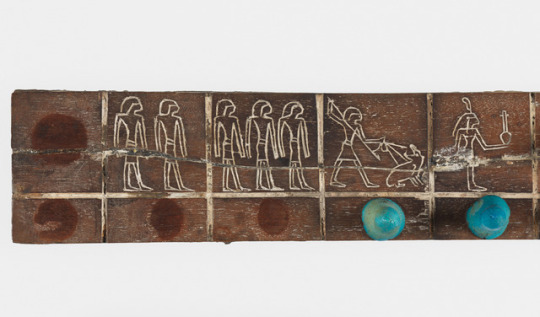
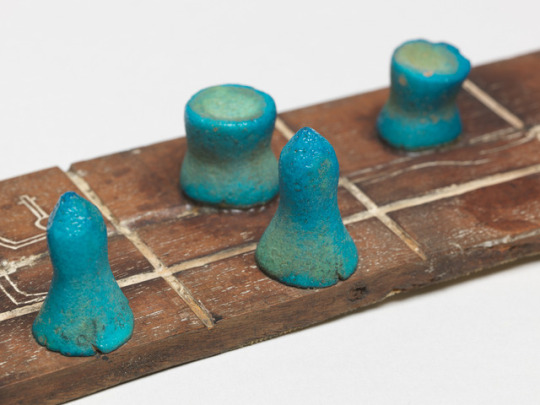

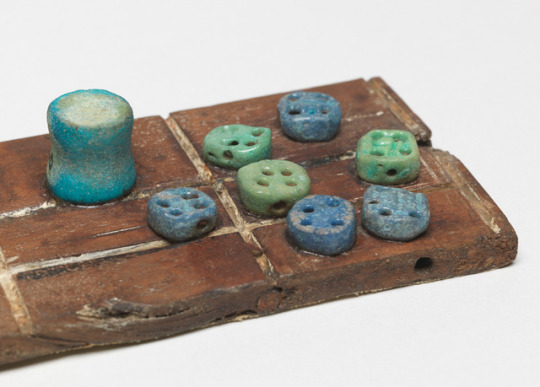
~ Game board/Game of Senet.
Date: ca. 1550 — 1295 B.C.
Period: 18th Dynasty
Medium: Wood
2K notes
·
View notes
Photo

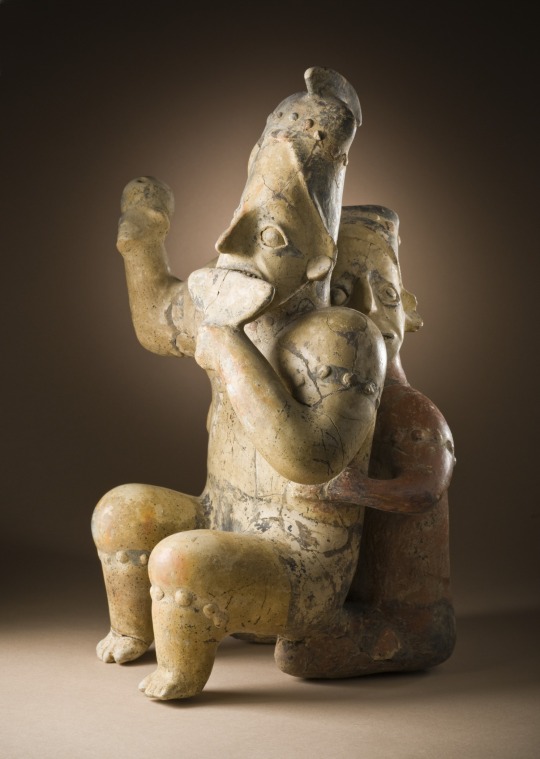
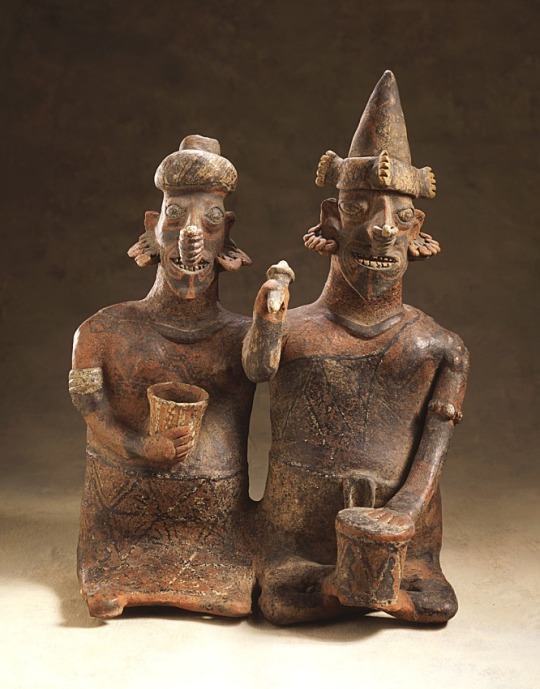
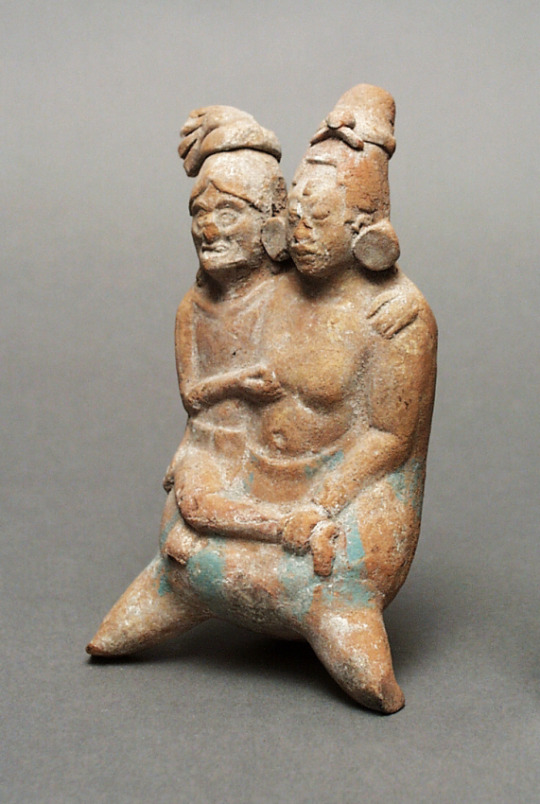
Joined couples in ancient Mexican art.
Joined Couple, Mexico, Nayarit, Nayarit, 200 BC- AD 500. AC1996.146.21.
Joined Couple, Mexico, Jalisco, 200 BC- AD 500. M.86.296.84.
Joined Couple, Mexico, Nayarit, 200 BC- AD 500. M.86.296.14.
Couple in the Form of a Whistle, Mexico, Yucatan Peninsula, Campeche, Jaina Island, Maya, AD 600-900. M.86.311.4.
All courtesy of the LACMA, via their online collections.
1K notes
·
View notes
Photo

Ancient Urartian Fresco in Erebuni Museum, Armenia.
Photo taken by EvgenyGenkin
256 notes
·
View notes
Photo
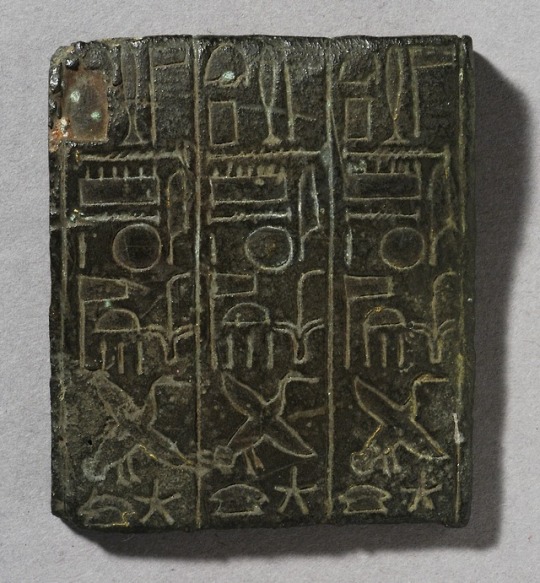
Bronze plaque with hieroglyphics inscribed by a High Priest of Amun. Third Intermediate Period, 21st Dynasty (1055 - 931 BCE) or later. Now in the Los Angeles County Museum of Art. Photo credit: LACMA.
170 notes
·
View notes
Photo

Ibex and the words “to dedicate” (hqny) in the sabaean language. 600 BC.
126 notes
·
View notes
Link
New discoveries at the Indonesian cave site of Liang Bua are changing the way we look at the mysterious Homo floresiensis – known as “hobbits” because of their short stature.
We originally believed these hobbits disappeared around 12,000 years ago, but it appears they may have actually died out long before this, around 40,000 years earlier. Research published in Nature today shows they used the cave between 190,000 and 50,000 years ago.
The finding, by ourselves and a team of international researchers, puts the disappearance of Homo floresiensis at around the same time that modern humans (Homo sapiens) first spread through the region and reached Australia.
But whether these two species of hominin (primates more closely related to modern humans than to living apes) ever interacted, and our ancestors can be blamed for the hobbits’ demise, remain open questions until direct evidence is found placing modern humans at the scene.
At present, the earliest evidence for modern humans on Flores is just 11,000 years old.
The discovery
The original discovery of Homo floresiensis was made back in September 2003, in the fading light of an archaeological excavation on the Indonesian island.
The skeletal remains of this primitive, small-brained and diminutive hominin were found buried six metres below the ground surface at Liang Bua, an impressive limestone cave in the island’s western highlands.
In the same deposits as the remains of this new species were stone artefacts and the remains of pygmy elephant (Stegodon), giant marabou stork, vulture and komodo dragon.Samples of charcoal and sediment were collected for radiocarbon and luminescence dating. The resulting age estimates of just 18,000 years ago for the type specimen – i.e. the specimen that is used to name the species – of the hobbit, known as LB1, sent shock waves through the paleoanthropological community. Fragmentary remains of other individuals were found in layers then thought to be deposited as recently as 12,000 years ago.The tiny hominin presented us with puzzles aplenty. It has an appearance most similar to fossil human species that lived in Africa and Asia between one and three million years ago.So how and when did this species or its ancestors get to this remote island? And how did it apparently manage to survive on Flores for 40,000 years after the first Australians had already passed through this island archipelago?Elsewhere in the world, first contact of a native fauna with modern humans usually ends badly for the endemic animals. Not so, it seemed, with the hardy hobbits.Further diggingThe revision in the last-appearance age for Homo floresiensis is the culmination of eight further years of painstaking excavation and study of the cave deposits at Liang Bua by many of the same researchers involved in the original discovery.
The key breakthrough has been the recognition of a major break in the deposit of the sedimentary layers – a “stratigraphic unconformity” – immediately above LB1 as a result of one or more erosional events in the past.As the excavations were extended each year, it became increasingly clear that all of the skeletal remains of Homo floresiensis, and the stone tools made by the hobbits, came from a large remnant pedestal of deposit that accumulated between 190,000 and 50,000 years ago.At the location of LB1, the hobbit-bearing deposits are truncated by a steeply sloping surface, which is capped by sediments that accumulated only in the last 20,000 years. It was those sediments that had been inadvertently dated in the original study.We now know that the stratigraphic sequence at Liang Bua is far more complex than had originally been thought. So, can we be confident in our new interpretation of the stratigraphy and chronology for the home of the hobbit? We think so.By excavating more of the cave deposits in the past decade, we have added many new pieces to the jigsaw puzzle of how the site has formed. This results in a vastly improved picture of what was deposited where, when and how in the cave.We have also used a range of new dating techniques, some of which were not available in 2003. As with technical developments in other fields of science, such as ancient DNA, time has also marched on with improvements to geochronology methods.For example, the bones of LB1 and two other hobbits were dated using the latest uranium-series methods, while the associated sediments were dated using infrared stimulated luminescence procedures that were developed only in 2011.These and other dating techniques, including radiocarbon, thermoluminescence and argon dating, provide a new, more robust chronology for Liang Bua and the prehistoric hominins that used this cave in the past.
What next for the hobbit?There are still many chapters of hobbit history to be written. When did the ancestors of Homo floresiensis first arrive on Flores and what did they look like? When did hobbits finally go extinct, and did modern humans play any role in their downfall?Liang Bua still holds many secrets, but a single site can provide only a snapshot in time.So the search is on for more hobbit sites, spanning a wider geographic area, both on Flores and elsewhere in the Indonesian archipelago. A decade from now, we hope to have found many more pieces of this prehistoric puzzle in human evolution.
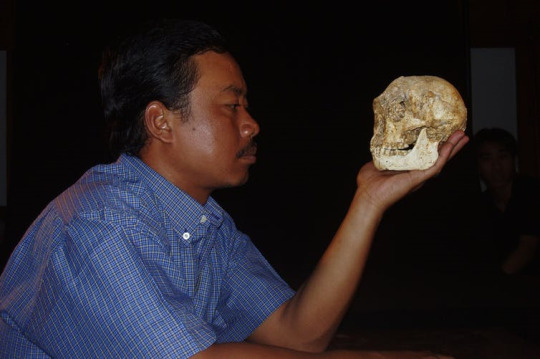
0 notes
Link
The Coelacanth (Latimeria menadoensis) was thought to be extinct for more than 60 million years and took the science world by storm in 1938 when it was re-discovered living in South Africa. This fish has retained its features for 400 million years. Parts of its body, such as its back and belly fins, have an additional structure that resemble amphibian feet.
The fish, which has been spotted in the waters of East Africa, including South Africa, Madagascar, Comoros and Tanzania, also lives in Indonesian waters.
But to the Minahasan people of Indonesia, it used to be considered just an unusual member of grouper fish family. They call it “oil grouper”.
The Indonesian Institute of Sciences (LIPI) with the Japanese Aquamarine Fukushima are planning to build a centre for Coelacanth research in Bitung, North Sulawesi.
We chose this location because fishermen often accidentally catch the Coelacanth in the Sulawesi waters. Now that they know how extraordinary this fish is, they have started to tell us when they accidentally catch one. We hope that by working with fishermen, when they do catch a Coelacanth, together we will be able to do more to keep it alive and return it to its habitat.
As researchers, we are curious to learn more about Coelacanth’s reproductive system, feeding habits, growth, genetics and migration, because all that information can reveal more about the evolution of living species.
From a fish market to museums
A University of California scientist Mark Erdman and his wife first sighted the fish in Indonesia in 1997. They found it dead at the the Bersehati market in Manado. They took a picture and tagged it as specimen number CCC 174.
A year later, on July 30th 1998, Lameh Sonathan, a fisherman from the Manadua Tua island accidentally caught another Coelacanth. That second specimen is tagged CCC 175.
The Bogor Zoology Museum holds the specimen at LIPI’s Cibinong Science Centre. By the end of 2014, Indonesia had seven Coelacanth specimens located in various parts of the country.
Where to find the Coelacanth in Indonesia
Recent research shows that the Coelacanth inhabits the waters in North Sulawesi and Papua. In the last 15 years, research on Coelacanth in Indonesia has been focused on the area of North Sulawesi and its surroundings. In 1999, Max Planck Institute and LIPI worked together to record sightings of Coelacanth using a submersible called “Jago”, which translates as “cockerel” in Indonesian. The research recorded sightings of two Coelacanth in the Sulawesi Sea at 145 metres deep. In 2006, LIPI’s research team and the Japanese Fukushima Aquamarine and Sam Ratulangi University recorded six Coelacanth sightings also in Sulawesi Sea 150 meters deep. A year later, the same team recorded nine Coelacanth sightings at Talise waters in North Sulawesi. In 2011, the research team sighted the fish in Biak waters in Papua. Researchers believe it is probable that the fish lives in other areas of east Indonesia. The topography and the oceanographic conditions there are similar to Papua and North Sulawesi: rocky, steep and full of caves. Coelacanth live in deep waters of at least 150 metres, with temperature between 14 and 18 degrees Celsius. Their habitat are caves of rock structures in the bottom of the ocean. There are still questions about the relationship between the Coelacanth in the East Africa coast and Indonesia. Researchers are trying to find answers through DNA testing. By looking at its form, shape and structure, we can study how evolution happens, and how long the process of morphology changes occur. One of the ways to study the morphology is by examining x-ray photographs of the Coelacanth. The study of the Coelacanth takes a long time, because of the very few specimens available. Intensive research is needed to find where significant numbers of Coelacanth live to ensure effective research and aid conservation.
0 notes
Text
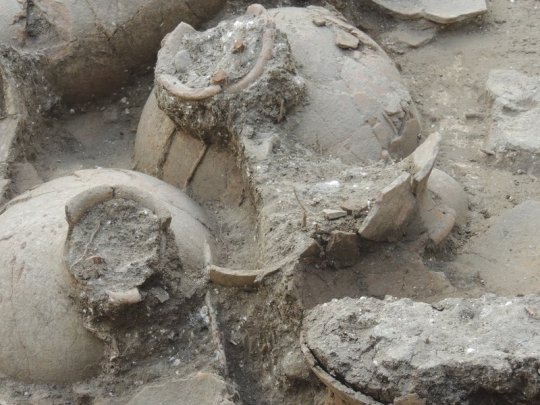
Ancient near-eastern wine was flavored with honey, herbs, and spices. That’s what the oldest and largest ancient wine cellar tells us. Dating to 1700 BCE, the wine cellar at the palace of Tel Kabri, in northern Israel, contained 40 huge jars. In modern sizing, that’s about 3,000 bottles of wine. The residue on these great jars tells us that besides tartaric and syringic acid, necessary for the wine-making process, the ancients liked to add unnecessary flavorings including honey, mint, juniper berries, and cinnamon.
565 notes
·
View notes